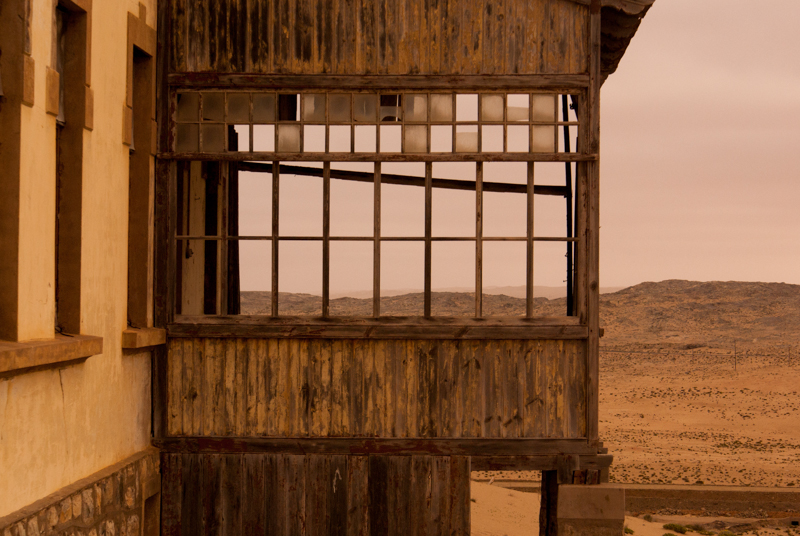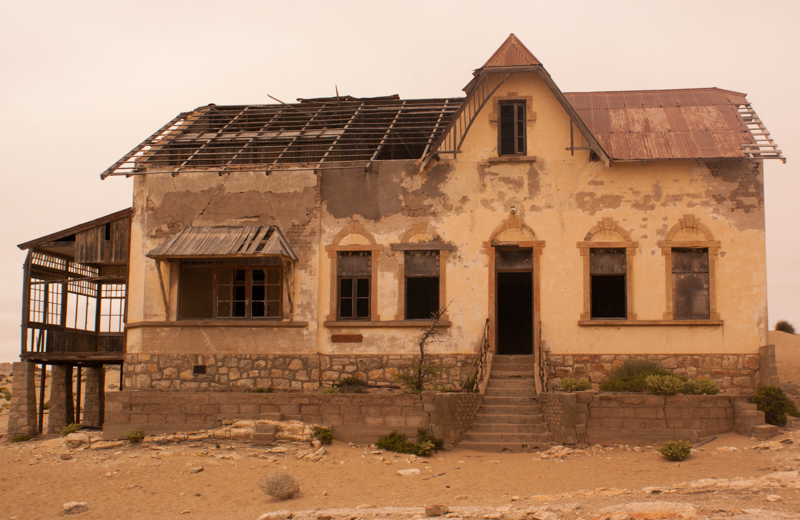Page 13 of 28
Re: Years of visits to this diverse place
Posted: Sat Apr 12, 2014 6:26 am
by Kesheshe
Re: Years of visits to this diverse place
Posted: Sat Apr 12, 2014 6:31 am
by Kesheshe
Kolmanskop is Namibia's most famous ghost town, and is situated in the Sperrgebiet, (forbidden territory) a few kilometres inland from the port of Luderitz. In 1908, the railway worker Zacharias Lewala found a sparkling stone amongst the sand he was shovelling away from the railway line, near Kolmanskop. His supervisor August Stauch, was convinced it was a diamond and when this was confirmed, the news spread like wildfire, sparking a huge, frantic diamond rush and causing fortune hunters to converge in droves on Kolmanskop.
Re: Years of visits to this diverse place
Posted: Sat Apr 12, 2014 6:46 am
by nan
some superb pictures, specialy this one through the broken windows


Re: Years of visits to this diverse place
Posted: Sat Apr 12, 2014 12:13 pm
by Lisbeth
Sad to see such a squalor

Re: Years of visits to this diverse place
Posted: Sun Apr 13, 2014 8:20 am
by Kesheshe
The development of Kolmanskop reached its pinnacle in the 1920's, but the town declined after World War 1, when diamond prices crashed. At this time approximately 300 German adults, 40 children and 800 Owambo contract workers lived in the town. In spite of, or probably because of, the isolation and bleakness of the surrounding desert, Kolmanskop developed into a lively little haven of German culture, offering entertainment and recreation to suit the requirements of the affluent colonialists.
Unfortunately for Kolmanskop and it's inhabitants, richer diamond deposits were discovered further south, and operations were moved to Oranjemund. Within a span of 40 years Kolmanskop lived, flourished and died. Today the ghost town's crumbling ruins bear little resemblance to its former glory. The stately homes have been nearly demolished by the wind, and are gradually becoming enveloped by encroaching sand dunes. In 1980, the mining company De Beers, restored a number of buildings, and established and interesting museum, which has now become a tourist attraction.
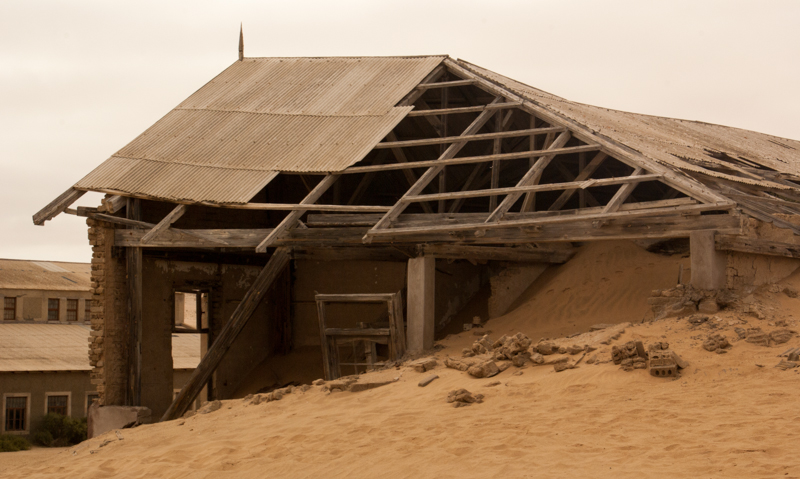


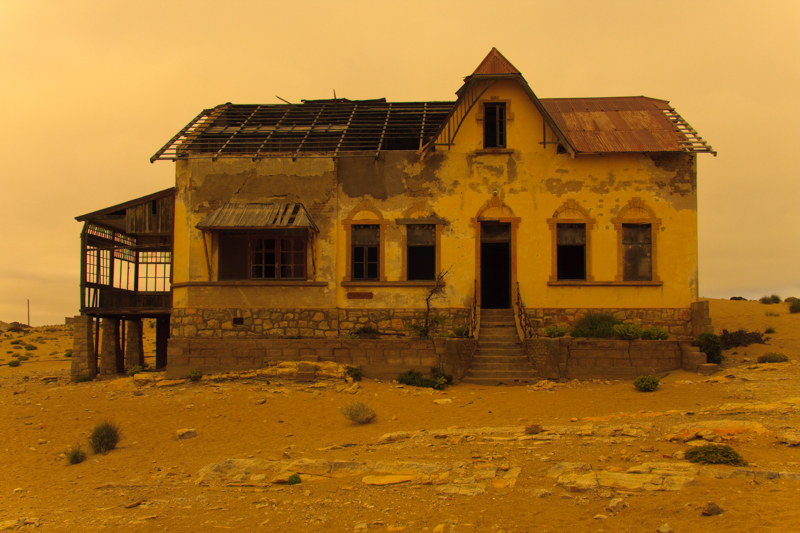
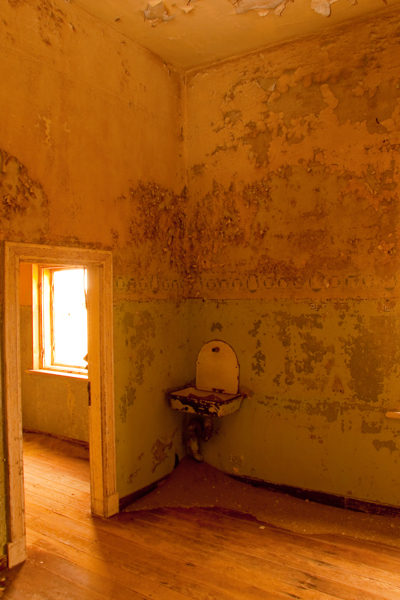
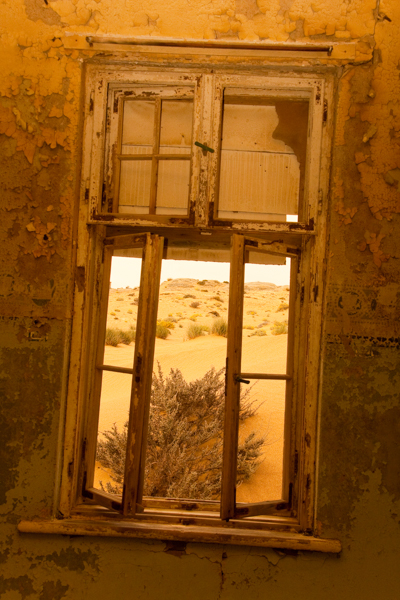
Re: Years of visits to this diverse place
Posted: Sun Apr 13, 2014 8:24 am
by Kesheshe
Film buffs might be interested to know, that in 2000, the film, The King Is Alive, was filmed in Kolmanskop, with the town being utilized as the film's main setting. The town was also used as one of the locations in the 1993 film, Dust Devil.
After obtaining your permit you can drive out to Kolmanskop and join a guided tour, which not only provides the history of the former mining town, but about the diamond industry today as well. After a short introduction and visit to the more important buildings, visitors are allowed to explore Kolmanskop on your own. Timings are:
• Monday – Saturday 09h30 and 11h00
• Sunday and public holidays – 10h00.
Most of guided safaris which visit Luderitz include an excursion to Kolmanskop, if you are self driving in Namibia and spend any time in Luderitz a visit to Kolmanskop should be on your itinerary.
This tour can not be pre-booked but can be arranged on your arrival in Luderitz.
OK Back on the road heading north.
where to next?
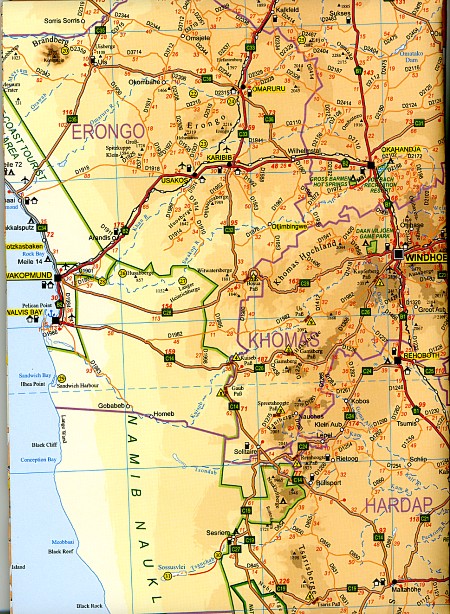
Re: Years of visits to this diverse place
Posted: Sun Apr 13, 2014 10:48 am
by Flutterby
What beautiful pics Kesheshe..thanks for sharing with us.

Re: Years of visits to this diverse place
Posted: Sun Apr 13, 2014 10:53 am
by Lisbeth
I do not know the two films, but I can imagine that what is left of Kolmanskop can make a great background.
Re: Years of visits to this diverse place
Posted: Mon Apr 14, 2014 1:07 pm
by Kesheshe
Lisbeth - you made me feel better as I also had no idea about those films.
Re: Years of visits to this diverse place
Posted: Mon Apr 14, 2014 1:12 pm
by Kesheshe
Desert Horses
It is not known how long the Namib Desert Feral Horses have lived on an area covering approximately 350 square kilometres in the Namib Desert, but local speculate they have been there since 'German times'. As there are no written records about their provenance their origins remain unclear, but there are, of course, quite a few theories. One of the best places to view these horses is at Klein Aus Vista Lodge, the horses can also often be spotted grazing alongside the main road between Aus and Luderitz.
One plausible theory relates to the German occupation of South West Africa a large number of horses were needed for the cavalry and an eccentric German nobleman, Baron Hans-Heinrich von Wolf, set up a horse breeding station at his outlandish castle, Duwisib, on the edge of the desert. Once the Baron went off to the first world war in Europe nobody looked after the stable of more than 300 horses and after his death herds of them ran wild, roaming the veld around Duwisib until 1950. It is possible that some of them wandered the 150 kilometres south- westward to the water at Garub.
It is likely, too, that some of the feral horses originated from the Schutztruppe mounts, as well as from the those belonging to a South African Expeditionary Force that took control of the Lüderitz- Keetmanshoop line during the First World War. Another theory is that a ship carrying thoroughbreds from Europe to Australia that ran aground near the mouth of the Orange River. The strongest horses could have reached the shore and found their way to the Garub plains.







